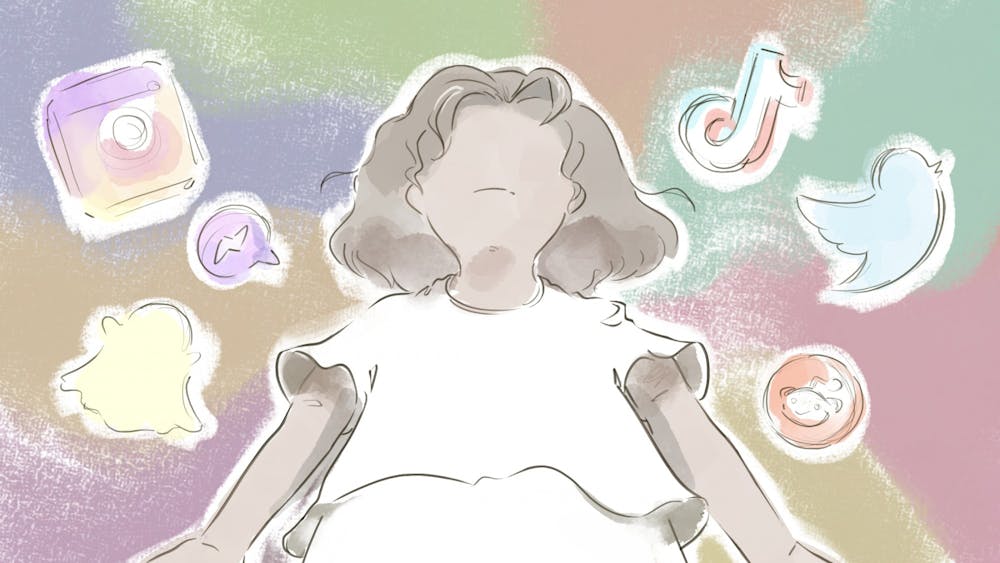I used to think that decisions were made in big leaps. Introductions meant braving the emotional deep end, and goodbye was a raw severing. I now understand decision–making through shades of gray, dictated by our desire to belong—wherever that may be.
In sixth grade, I discovered Freelee the Banana Girl on YouTube—a lifestyle vlogger, who promoted an extreme, unsustainable vegan diet. I was young, malleable, and had just been thrust into the worldwide web. This woman’s YouTube channel, in all its chaotic evil, seemed to be the answer to achieving happiness by way of an unattainable diet and body. I was twelve years old.
Social media and the internet offered this “perfect” gateway to a million different personas, and I wanted them all. I wanted to be funny enough, well–liked enough, good–looking enough, but in my own distinct way. I yearned for these intangible characteristics, but I didn’t want people to see my insatiable need to fit in.
When TikTok came along and a friend raved about the app to me, it was still in its infancy—another attempt to replace Vine. It was not until months later when the app became all the rage that I, along with adolescents worldwide, became hooked.
No longer were 20–minute YouTube videos the source of unspoken rules dictating my likes and dislikes. TikTok provided thousands of lifestyles and personality quirks to try on for size, right at my fingertips. Before I knew it, my expressions, my music taste, my clothing style, and even my hobbies were reflected all around me and through me. I was at once a mirror and a window to the world beyond the black screen.
One might characterize my actions as those of an insecure teenager lost in a flurry of uncertainty and lacking in affirmation, to which I would say, touché. Simultaneously, the state of young people in the digital age is one of hyper visibility and hyper invisibility. We put our identities up for judgment but keep them curated to our liking. We shrink into ourselves when our off–screen identities don’t live up to our digital selves. In an age of excess, it is easy to become lost in the binary of 1s and 0s. My identity flattened to what I showed on my feed, and my experiences were lost to instant gratification.
I have deleted apps out of dissatisfaction and have felt the urge to throw my phone across the room and forcibly break the trance. I’ve done the scroll of shame on the app store, downloading TikTok from the cloud, hoping that all of my saved videos awaited me.
At 20 years old, I have some convoluted notion of the transition from one’s formative years to adulthood. Somehow, stepping into my identity means disentangling myself from my decade–old digital footprint. I feel apathy towards social media, a world that once dictated my behavior. How can I feel animosity towards something I so willingly embraced? How can I denounce the same thing that builds bridges and breaks barriers? I can both appreciate the beauty of the digital world while recognizing the toll it has taken on my existence.
Knowing this, I’ve begun the untethering of my identity from my digital presence. I once tried to cut my ties with social media entirely, but I am now more reflective about how my relationship with it can evolve with time. While TikTok has been gone from my phone for approximately four months and Instagram is at times a lingering memory, I slowly find ways to plant seeds of authenticity in my feeds. Where one door closes, another opens to a new world for you to make your own. Perhaps it’s true that some decisions are best made in short strides.







